
With classroom-tested tips from our Curricular Resources authors on how to improve your teaching at any grade level, each Writing Masters installment will share author insights and practical suggestions on teaching writing in the classroom that you can use the very next day. This week in the Writing Master series, Linda Hoyt introduces us to Power Writes, an effective classroom writing exercise.
“Children get better at writing by writing. When they write in every subject area, every day, they automatically use the language of the learning, solidify understanding and stretch their control of language. Informational writing is a well-proven support system to effective reading and a survival skill for life.”—Linda Hoyt
Power Writes—Every Subject, Every Day!
by Linda Hoyt
Write to wonder
Write to remember
Write to understand
The National Writing Commission has challenged schools to “double the amount of time spent writing at every grade level.” A challenge, for sure, but we can do it!
In the world outside of school, we write all the time. We use writing as a tool to help ourselves remember, to communicate with others, and to focus on our thinking. At home and in our professional lives, we make lists, leave notes for family members, send emails to friends and colleagues, write letters, and so much more. So, why not bring these real-world text types into the learning lives of our students? If we dedicate a few minutes in each learning segment of the day, kids can experience meaningful writing—using a text type they will need to control in their lives outside of school. In math, learners might use a friendly letter format to write a letter to parents or caregivers, explaining how they solved a math challenge. During independent reading, individual students might create book reviews to evaluate the book they read and then post it inside of the book or underneath the book’s position in a book display. After a read aloud, they might create a bulleted list of character attributes for the main character and then meet in teams to share and compare their lists. During science, periodic breaks could provide partners with time to list observations and questions that could be used to fuel further inquiry and conversation. These short bursts of meaningful writing solidify understanding of concepts, invite reflective thinking, provide powerful applications for content-specific vocabulary and broaden the range of text types writers can utilize. These are Power Writes!
Audience and authenticity are critical elements of Power Writes. Different from a learning log or a journal, Power Writes are meant to be shared with others. When students understand that they will be sharing what they write with a partner, a student from another class, or a family member, they are motivated to use quality thinking, careful handwriting, and to apply conventions.
Some ideas for Power Writes:
Book Reviews
Show your students some book reviews (there are some great kid examples online) and then create one in front of them. You can make it as simple as a sticky-note book review such as the example from Jack. Or, elevate the complexity by placing it on a From the Desk Of ___ form as in the example from Alania. Then make the reviews public through partner shares, posting in the class library and so on.
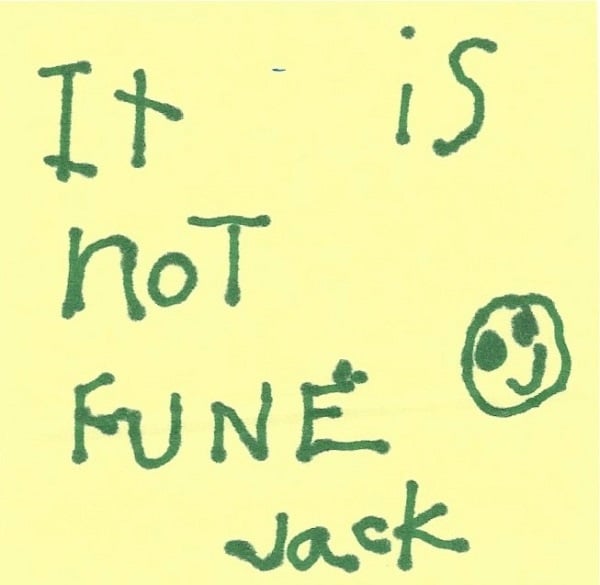
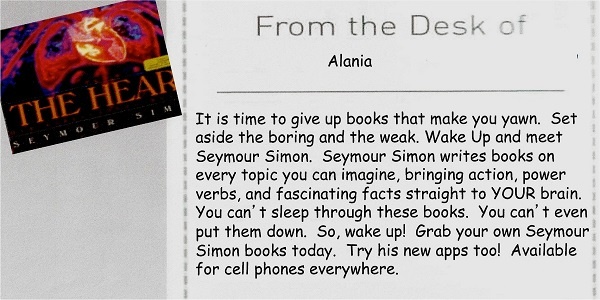
Informational Poems
Poems that convey information can be quick to write while serving as powerful reflections. If you have learners collect key words and phrases as they read informational selections, the collected vocabulary can quickly be organized into a list format that forms the foundation for delightful poems. The list poem "Frog" is a second grader example.
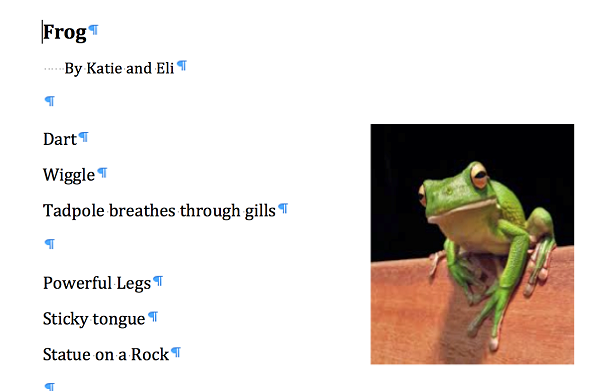
Letters
Friendly letters can be terrific Power Writes once students become familiar with the structural elements of a letter. I find that it is helpful to let students know in advance that they will be writing a letter so they can actively collect ideas as they engage in the learning experience. Here are two examples to consider: Juanella writing to her parents about a book she read during independent reading, and Aden writing to his math-learning partner Tashi about solving a math problem.
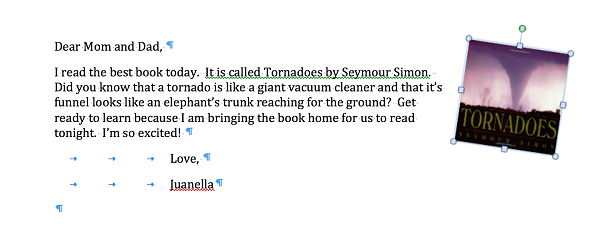
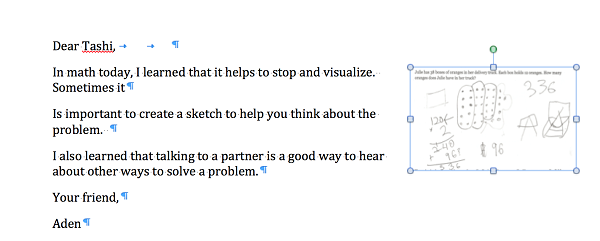
Write Directions
After an experience in science or art, each student could develop a set of directions using the correct format for a procedure and then teach a child in another class how to read the directions and follow the steps. Notice how a creative kindergarten teacher had students write directions after snack time!

Public Service Announcements
PSAs are frequently seen on television. Why not have writers create public service announcements to highlight topics of interest? These dynamic Power Writes take a bit longer but they are really worth it as students research, establish a position on a topic, and then generate a poster, slide show or even a video presentation.
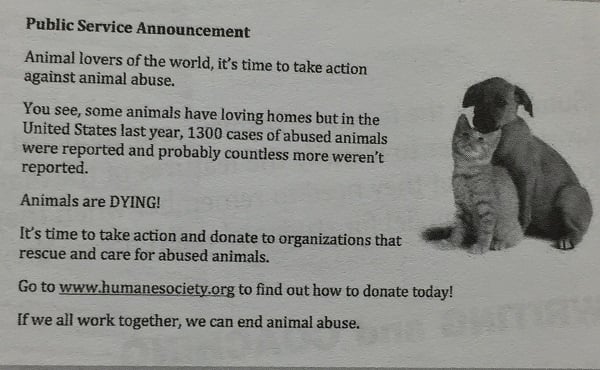
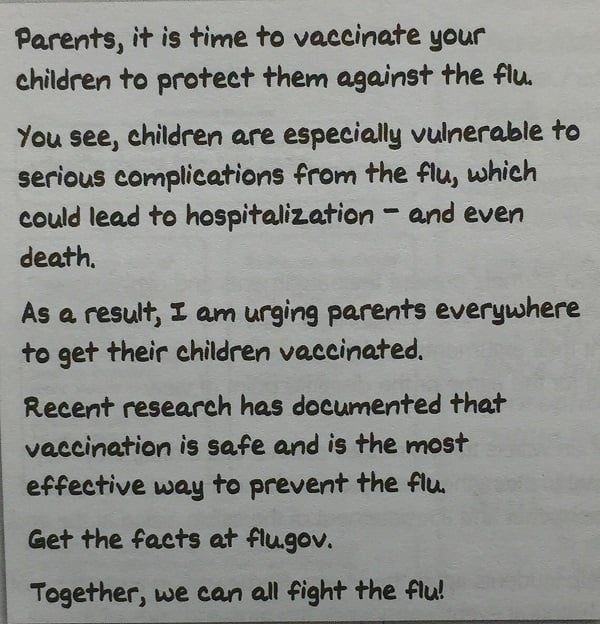
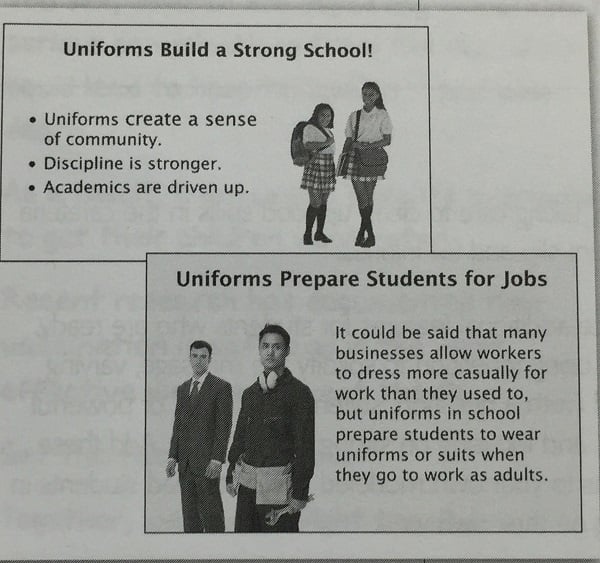
From Explorations in Nonfiction Writing, Grade 5
Today’s nonfiction writing brings excitement to both educators and children, fostering a fertile setting in which nonfiction writers can read, think, and write as they explore their innate interest in the world around them. When you infuse a strong writing emphasis into the heart of each content area, academic vocabulary and knowledge are extended and solidified. So, power up writing, all day long with Power Writes!
***

Though Linda Hoyt spent many years as a classroom teacher, reading specialist, curriculum developer, staff developer, and Title I District Coordinator, her passion will always center around vigorous and engaging classrooms where teachers and children learn together. This passion has led Linda to create 24 professional books and video programs, plus numerous instructional resources for children. A few titles from her multidimensional list of Heinemann publications include Revisit, Reflect, Retell, Make It Real, Interactive Read-Alouds, Solutions for Reading Comprehension, and her newest resources, Explorations in Nonfiction Writing and Crafting Nonfiction. Three of her popular Heinemann video programs include Nonfiction Writing (one for primary and one for intermediate) and Navigating Informational Texts.


